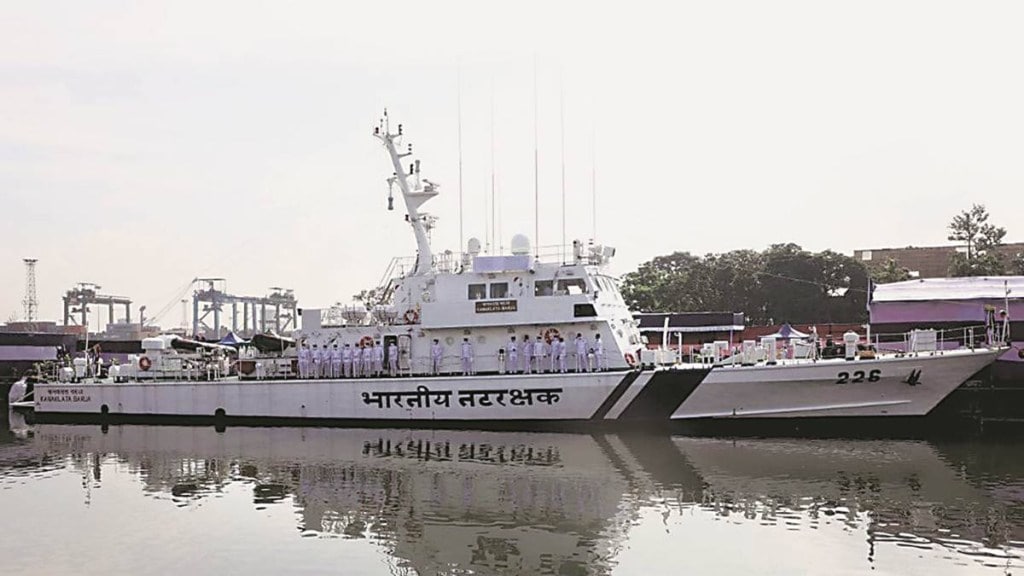Earlier this week the Ministry of Defence (MoD) has given its approval for 24 proposals out of which two proposals including Multipurpose Patrol Vessel and Next Generation Offshore Patrol Vessels are for the Indian Coast Guard. These vessels will greatly increase the capability of the Indian Coast Guard to conduct coastal surveillance.
Earlier this year in March the Indian Coast Guard (ICG) commissioned the M-Class multipurpose offshore patrol vessel (OPV), ICGS Saksham, she was the fifth vessel in the series of 105 M-Class vessels.
On August 26, 2016, Goa Shipyard Limited (GSL) and the MoD inked a deal for five Coast Guard Offshore Patrol Vessels (CGOPV), and within three months, manufacturing began with Prime Minister Narendra Modi cutting the steel later that year in November. The contract for the CGOPVs was awarded on August 26, 2016.
As per the contract, the Indian Coast Guard ships would be supplied with state-of-the-art machinery and computerised control systems, and the GSL will outfit these ships based on a design that was developed in-house. These OPVs will make up a substantial section of the Coast Guard Fleet and will be utilised for the purpose of defending the nation’s Exclusive Economic Zone as well as its territorial waterways. The design of these OPVs was conducted totally in-house by the professionals at GSL.
In addition, every single one of the five CGOPVs will be the most technologically advanced patrol vessel currently in use by the United States Coast Guard. The 2,400-ton vessels have gunnery simulators and quick-response boats that can be used in anti-piracy and rescue missions.
The hull has been designed to be as fuel-efficient as possible while also maximising the comfort of the crew and the ship’s ability to maintain its course.
Indigenous content
Previously imported, the steering gear and gearbox of the modern offshore patrol vessel have been replaced with wholly indigenous components. Domestic production of the gearbox component was handled by Walchandnagar Industries Limited (WIL), located in Pune. Geeta Engg Works Pvt Ltd. of Mumbai was the company responsible for the fabrication of the Steering Gear System. The Fin Stabilizer System was built locally by GSL (in conjunction with Naiad Dynamics UK), while the Steel Plates were built locally by Essar Steel, Gujarat. Both of these companies are based in Gujarat. ACGIL and ZuariEngg Goa were responsible for the construction of the doors (water and weather light). The Aquarius Shipyard in Goa was responsible for the in-house construction of the Gemini Boats.
Multipurpose vessels
For boarding operations, search and rescue, law enforcement, and maritime patrol, the ship is designed to carry one helicopter with twin engines as well as four high-speed boats, including two inflatable boats. In addition to that, the OPV is equipped to haul a small amount of oil spill containment equipment.
The five OPVs have a length of 105 metres, a beam of 13 metres, a displacement of around 2,350 tonnes, and the capability to carry 18 officers and 108 enlisted personnel between them. The vessel is powered by two diesel engines with a combined output of 9,100 kW, which are mated to controllable-pitch propellers. As a result, the vessel has a maximum speed of 26 knots, a range of over 6,000 nautical miles, and an endurance of 20 days.
Each vessel is armed with a 30-millimetre Medak/Shipunov naval cannon as well as two 12.7-millimetre heavy machine guns installed on stabilised remote weapons platforms. These cannons and machine guns are both remotely controlled. In addition, a gunnery simulator has been installed so that crew training can be aided by it. The electronics comprise not just a power management system but also an integrated bridge system, an integrated platform management system, and an integrated platform management system.
The OPV is responsible for a variety of tasks, including law enforcement, anti-piracy patrols, maritime sovereignty patrols, environmental preservation, and emergency response.
They are an improvement over the earlier Sankalp class in that they have a beam that is wider and engines that are more powerful. The construction of the vessels is being done in two batches: the first batch, which consists of six vessels and was ordered in May 2012, and the second batch, which consists of five vessels and was ordered in August 2016.
The previous series was also built by GSL — ICGS Samarth, ICGS Shoor, ICGS Sarathi, ICGS Shaunak, ICGS Shaurya and ICGS Sujay.
The latest addition includes ICGS Sachet, ICGS Sujeet, ICGS Sajag, ICGS Sarthak and ICGS Saksham.

